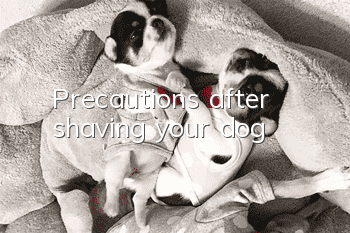How to train German Shepherds defensively?

German Shepherds are agile and suitable for action-oriented work environments, and they are often deployed on a variety of tasks. Later, he was recruited by the German army during World War I and served as a military dog. After being cultivated by the German army, it was basically finalized. Because of their tall size, powerful appearance, and strong working ability, they are active around the world as military dogs, police dogs, search and rescue dogs, guide dogs, shepherd dogs, ornamental dogs, and domestic pet dogs. So how do we conduct defensive training on it?
German Shepherd
Search by specified route:
This is the first step in defensive training. If you don’t know much about dogs in advance, you must carefully check the dog’s ear number before training to see if the dog has been registered and has a formal breeding record. In addition, it is best to observe the dog's mental state from a distance to determine whether the dog's psychology is stable. The trainer can usually leave the leash loose and approach the dog naturally, and if the dog is not shy or aggressive, the training can proceed. If the dog is too receptive, avoids, or has a strong tendency to attack, it means that the dog has a mental condition problem or an unsatisfactory character (temperament), and there is no basis for training.
Determining the walking route of a German Shepherd is very simple, as long as a person walks a certain distance on an ordinary piece of land or grass. But this person needs to set a certain number of turns and some special small objects on the road he travels. The latter usually can use some credit card-like cards. Of course, these cards must be placed on the road by the person himself. Once set up, the handler can guide the dog on its way. The trainer can lead the dog with a 10-meter-long leash and try to loosen the leash as much as possible. Let the dog identify the path by smelling the former's footprints, and at the same time let the dog identify the small objects set in advance. The method of identification is usually to let the dog lie down first and put a small object between the dog's two paws. After the dog remembers it, it can officially start walking. The focus of this kind of training, which allows the dog to walk along a designated route, is to test the dog's ability to accept training, its sense of smell, as well as its psychological quality and physical endurance.
Password obedience:
The training focus of this project is to let the dog perform a series of following training, mainly to let it approach and follow a group of people. During the following process, a person can intentionally burst out a gunshot. At this time, the dog should ensure that there is no excessive frightened reaction and no harsh barking. At the same time, command obedience training also includes a series of training on receiving commands in situ, mainly including sit down, lie down, stand up, etc. In addition, if the dog does not stay in place after the trainer changes the location, the dog should still follow the command given by the trainer as usual. The dog cannot refuse to execute a command due to a change in the trainer's position.
It should also be noted that when training, the trainer should require the dog to lie down on the ground with the trainingEven if the trainer is playing with other dogs on the other side of the training area, the dog should remain lying there. Of course, all this obedience training is a test of the dog's character (temperament), effectiveness of body structure, and desire to work.
Basic defense techniques:
The training of basic defense techniques focuses on testing the dog's courage, physical strength and agility, as well as the owner's control of the dog. These trainings include: searching for hidden objects, discovering hidden people, and guarding the "target person" until the dog owner arrives; when the target person attempts to escape, the dog must have the desire to pursue and bite the "target person" with a sheath. The arms are held until the "target person" is escorted by the dog and owner to the referee. If the "target person" attempts to attack the dog owner again, the dog must bite the "target person" without hesitation and resolutely stop him from infringing the dog owner.
- Why is my dog’s belly so hot?
- To train your dog to follow, learn these 5 “killer tricks” to make your dog never leave you!
- How to train Russian Shepherd Dog to be obedient
- What are the symptoms of worms outside the dog's body?
- When can puppy’s nails be cut?
- How much does an Alaskan dog cost and is it easy to train | Pictures
- How many menstrual periods does a dog have in a year?
- Is the Wolf Green Dog expensive? Training methods | Pictures
- What to do about canine distemper in American Bully dogs
- Why does a dog vomit? What should I do if my dog vomits?



